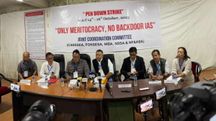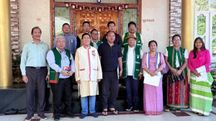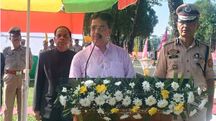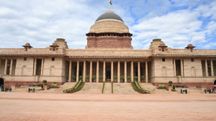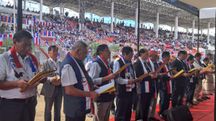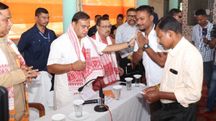
How a teenager from Assam is leading the fight to protect Behali Wildlife Sanctuary
Fifteen-year-old Pranoy Mahanta is leading wildlife conservation efforts in Assam through research, awareness, and community engagement. His dedication is inspiring local youth and protecting vital ecosystems like Behali Wildlife Sanctuary.
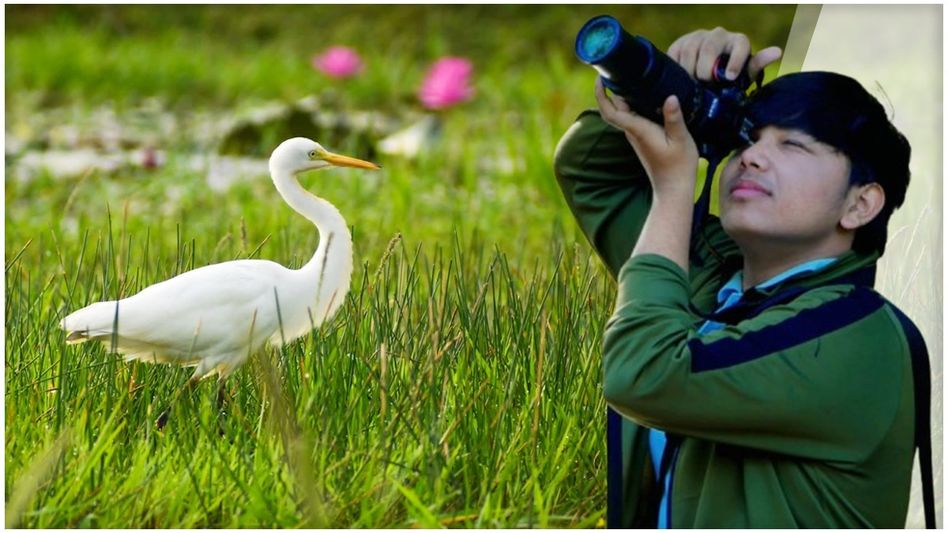 Assam’s Young Conservationist Pranoy Mahanta Champions Wildlife Protection
Assam’s Young Conservationist Pranoy Mahanta Champions Wildlife ProtectionIn the verdant heart of Assam, where the Brahmaputra’s channels braid fertile plains and forests echo with the calls of elephants and birds, lives a young naturalist whose work has already begun to shape his community’s relationship with nature. Pranoy Mahanta, a Class Ten student from Nasbor village in Biswanath, is no ordinary teenager. His deep commitment to wildlife conservation, painstaking documentation of biodiversity, and tireless efforts to raise awareness among peers and elders alike have made him a beacon of hope for the preservation of Assam’s rich natural heritage.

Though still in school, Pranoy has already built an impressive record of fieldwork, writing, photography, and community activism. His passion is not merely academic: it is rooted in personal experience, family influence, and a determination to see real change on the ground. This is his story—a story of early inspiration, hard-won achievements, persistent challenges, and an unwavering vision for a greener, more harmonious future.
The Spark: Childhood encounters with nature
Pranoy’s journey into the world of wildlife began at the tender age of five, guided by the steady hand of his father, Gakul Mahanta. A teacher by profession, his father is also an environmental activist who serves as the Environmental and Education Secretary at Nature’s Bonyapran, a local conservation group in Biswanath.

Through his father’s activism, Pranoy was introduced to the lush, fragile wilderness of the Behali Wildlife Sanctuary—then still classified as a Reserve Forest. Behali was a battleground of sorts: threatened by encroachment, illegal logging, and poaching. Pranoy witnessed first-hand the tireless work of his father and other Nature’s Bonyapran members to save this unique patch of forest. Their efforts aimed not only to halt destruction but to convince authorities to officially declare Behali a wildlife sanctuary—a goal that was eventually realized.

This early exposure left a profound mark on Pranoy’s young mind. In 2015, his mother, Hira Devi—a nature lover herself—sent him with his father on his first visit to Behali. The memory remains vivid: a five-year-old boy holding his father’s hand as they entered the forest together, greeted by its raw beauty and mystery. That moment, he says, awakened his lifelong fascination with nature.

The encouragement did not stop there. When he was in Class 3, his father gifted him a pair of binoculars—a small but life-changing tool. With these, Pranoy began observing birds and wildlife more closely, sparking a habit of careful watching and recording that would become central to his work. By Class 5, he was reading wildlife magazines; by Class 6, he had begun systematic fieldwork in his own village of Nasbor, keeping meticulous checklists of the species he encountered.
Growing into a naturalist: Early fieldwork and discoveries
Pranoy’s early fieldwork focused on his home landscape in Northern Assam, particularly the Bedeti Wetland near his village. Even as a school student, he applied a researcher’s rigor to his observations. In Class 7, he completed two comprehensive checklists: one for Bedeti Wetland, where he documented over 60 bird species, and another for his village, listing more than 45.

Seeing his dedication, his mother gifted him a DSLR camera, opening new possibilities for documenting wildlife. He used this camera not as a toy, but as an essential conservation tool—capturing images of birds, reptiles, mammals, and amphibians in their natural habitats. Photography became both a record and a means of advocacy, helping him show others the beauty and importance of local biodiversity.
Even in these early years, Pranoy was not content with solitary exploration. He joined awareness programs and organized forest visits, determined to share what he was learning with peers and community members. Slowly, he transformed from a curious child into an active conservationist with a clear mission: to protect, document, and advocate for the wildlife of Northern Assam.
Commitment to Behali Wildlife Sanctuary
The Behali Wildlife Sanctuary holds a special place in Pranoy’s heart. It was the site of his first transformative encounter with wilderness and remains central to his work. Starting from Class 6, he began active field research in Behali, dedicating countless hours to studying its rich biodiversity.
Through his methodical documentation, he added many new species to existing checklists, building a more complete understanding of the sanctuary’s ecological wealth. His work was not confined to lists alone: he engaged with the Forest Department and conservation groups, shared his findings widely, and advocated for the sanctuary’s protection in local media.
His commitment culminated in the authorship of a book titled “Wild Wonders of Behali Wildlife Sanctuary.” This publication is not just a record of species; it is a testament to his passion and scholarly approach to conservation. It has already become a valuable resource for local conservationists and nature enthusiasts alike.

Beyond Behali: Wider conservation efforts
While Behali remains his home ground, Pranoy’s work extends beyond it. He has become involved in conservation efforts in Kaziranga National Park, particularly its North Bank area. There, he documents wildlife sightings and produces short video clips, some of which have been officially published by the Kaziranga Park Authority and shared by senior officials.
Since 2022, he has been conducting a long-term study on bird species in Kaziranga’s North Bank region. This project reflects his characteristic thoroughness and dedication to contributing real data to conservation efforts.
Championing wetland conservation
Wetlands have emerged as another focus of Pranoy’s conservation mission, particularly the Bedeti Wetland in Biswanath. He has documented over 150 bird species there, along with reptiles, mammals, and amphibians. His work is not limited to observation: he collaborates with local communities and the Forest Department to protect these delicate ecosystems.
Recognizing that awareness is the foundation of conservation, Pranoy has organized multiple community meetings and educational programs. Through these efforts, he has transformed the local approach to wetlands—from sites of unchecked exploitation to cherished habitats in need of stewardship.
His influence has spread beyond Bedeti to other wetlands in and outside his district, where he continues to share knowledge and inspire action.
Despite his youth, Pranoy has become a sought-after speaker at conservation events. He has delivered talks and presentations at various prestigious forums, seizing every opportunity to raise awareness among students, officials, and the general public.
He believes strongly that conservation must begin with understanding. Through his talks, he explains not only the beauty of wildlife but also the practical steps communities can take to protect it. These experiences have been deeply meaningful for him, affirming his role as both a researcher and an educator.
Protecting birds and fighting poaching
One of Pranoy’s most passionate commitments is to the protection of birds, especially during their vulnerable breeding seasons. In the past, villagers in his region routinely collected the eggs of species such as the Lesser Whistling Duck. Through sustained outreach and education, he helped transform this harmful practice into one of protection, convincing local communities to become guardians of the very species they once exploited.
He also monitors paddy fields in winter, when large flocks of geese and ducks arrive. Poachers have been known to poison these fields to kill birds. In response, Pranoy works closely with the Forest Department, conducting night patrols, locating and destroying poisoned bait, and helping prevent these crimes. He has also organized joint awareness programs with the district administration and police to combat such threats.
Photography and film: Telling nature’s stories
Pranoy’s love of photography has evolved into a powerful conservation tool. Using his DSLR camera, he has created several documentaries and short videos that showcase the wildlife of Assam and highlight urgent conservation challenges.
His works include:
'A Small Documentary Film on the Lesser Adjutant Stork'
'Glimpses of Wildlife Found in Behali'
'Here you know everything about Behali reserve forest'
These films have reached broad audiences, sometimes going viral on social media. Notably, a video he captured of an elephant calf in Behali was shared by Assam’s Chief Minister, Himanta Biswa Sarma, through his official Facebook and Twitter handles—a moment of recognition that brought statewide attention to Behali’s wildlife. Such milestones have further motivated Pranoy to use visual storytelling as a means to inspire and educate.
Writing for conservation
Pranoy is also an accomplished writer. His articles in both Assamese and English have been published in newspapers, spreading his conservation message even further. In these pieces, he shares his observations, experiences, and appeals for greater public involvement in protecting wildlife.
His writing is notable for its grounded authenticity. It speaks not only of the wonders of nature but also of the real challenges faced in protecting it. Through words and images alike, he strives to change hearts and minds.
Rescue work: On the frontlines of conservation
Pranoy’s commitment to wildlife is hands-on. He has been involved in numerous rescue operations, saving injured and trapped animals and returning them to the wild. His rescues include:
Bar-headed Geese
Scops Owls
Lesser Adjutant Storks
Various snake species caught in nets or threatened by human conflict
Mammals such as deer and Slow Loris
These rescues require courage, skill, and compassion—and underscore his philosophy that conservation is not just about advocacy, but about direct action.
Elephant conservation and human-wildlife conflict
Elephants hold a special place in Pranoy’s work. He monitors elephant movement and human-elephant conflict in and around Behali. Recognizing that conflict often stems from misunderstanding and fear, he engages with affected communities, listens to their concerns, and shares fascinating facts about elephants to build empathy.
Since Class 6, he has been involved in this work, striving for coexistence rather than conflict. His approach combines scientific observation with heartfelt community engagement, aiming for solutions that protect both human livelihoods and elephant lives.
Witnessing change: A community transformed
One of the most rewarding aspects of Pranoy’s journey has been witnessing genuine change among his own people. When he began his conservation work, awareness was minimal. Practices such as egg collection, hunting, and careless resource use were widespread. But through years of patient education, personal example, and community outreach, attitudes have shifted.
Today, most villagers in Nasbor have become active participants in conservation. The transformation at Bedeti Wetland is especially striking. Once over-exploited and neglected, it is now guarded by local youth who monitor it with pride. Even when Pranoy cannot visit for a few days, he knows it is in safe hands.
The change is not limited to Bedeti. In his school and nearby villages, people now inform him whenever they spot wildlife, while friends have begun joining him on forest visits, eager to learn and help. For Pranoy, this communal awakening is the greatest reward for his hard work.
Facing Threats and Challenges
Yet this path is far from easy. As a student conservationist confronting entrenched interests, Pranoy has faced many challenges. He has received verbal abuse and threats from poachers and others who profit from wildlife destruction. At times, his safety has been genuinely at risk.
Such experiences have tested his resolve—but never broken it. On the contrary, they have deepened his sense of purpose. He knows that standing up for wildlife often means standing against powerful, destructive forces. Despite the danger, he remains committed to this cause because he believes every life saved, every forest preserved, and every mind changed is worth the struggle.
What drives Pranoy Mahanta is not fame or recognition, but a clear, heartfelt goal
“I want to see a future where people and wildlife live in co-existence, not conflict. I want to see our future greener. I want our birds to soar high. I want all animals to live soothingly. I want to stop the extinction of species. I want a future which is nature-endowed.”
His dream is both simple and profound: a world in which human development respects nature, where forests and wetlands are preserved, and where animals and humans share the land in peace.
At just fifteen years old, Pranoy Mahanta has accomplished what many would consider remarkable for a lifetime. From a small village in Northern Assam, he has built a conservation movement that spans local forests, wetlands, and communities. He has combined the tools of science—binoculars, cameras, checklists—with the tools of advocacy—writing, public speaking, education—to make a real difference.
His work is a powerful reminder that true conservation is not about grand gestures alone, but about consistent, determined effort over time—often against formidable odds.
Above all, Pranoy’s story is a testament to the power of one passionate individual to inspire change. It is proof that even the youngest voices can have a mighty impact—and that the fight to save our planet’s precious biodiversity is in good hands with the next generation.
Copyright©2025 Living Media India Limited. For reprint rights: Syndications Today

